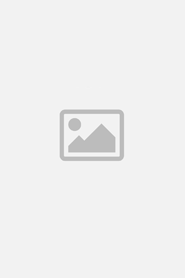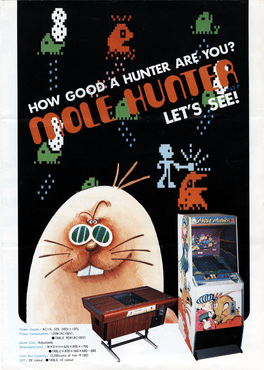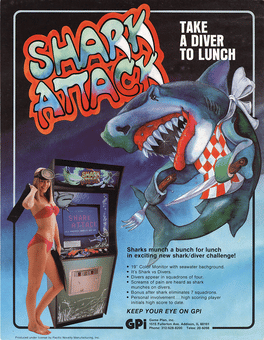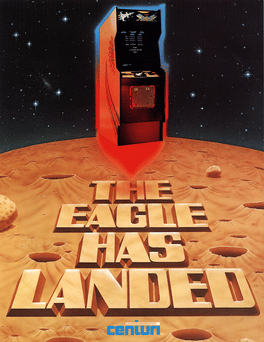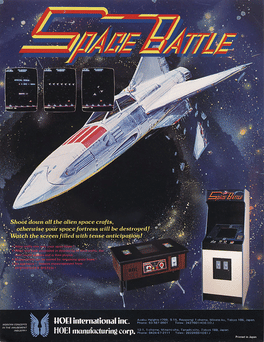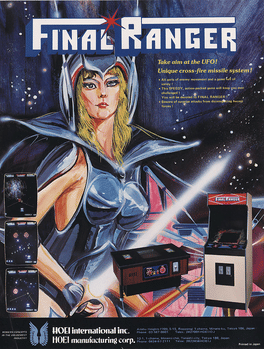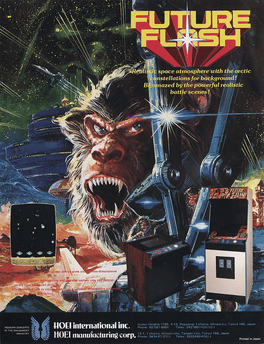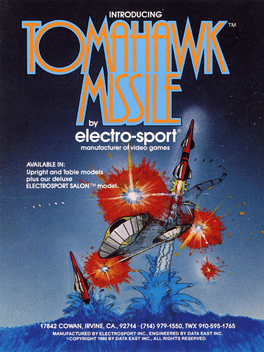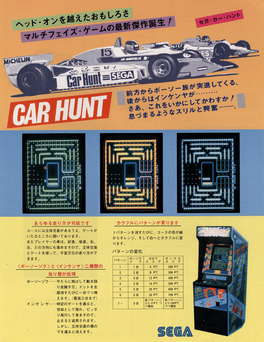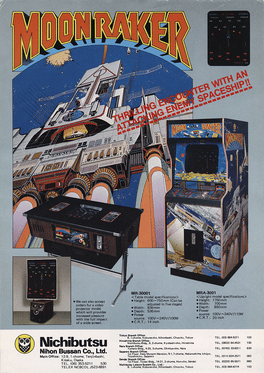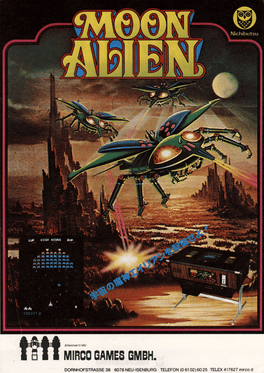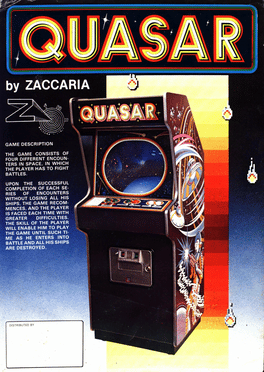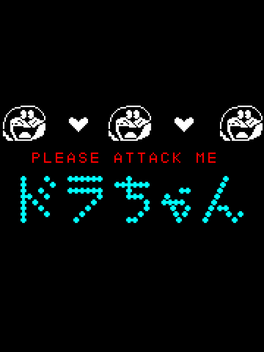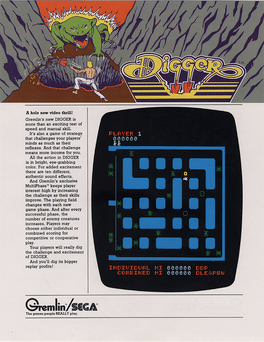New Arcade Games - Page 128
-
Gingateikoku No Gyakushu
1981
You pilot an arrowhead-shaped vessel at the bottom of the screen, facing off against four different types of enemies. Certain enemies drop 'space soldiers' when shot, if these make it to the bottom of the screen, they will try to 'spear' your ship from behind. -
The End
1981
-
Pac-Man (speedup)
1980
-
Mole Hunter
1980
-
Shark Attack
1980
Shark Attack
1980
In this game you play the man-hunting shark for a change and try to kill the divers who are set out to kill you. -
Eagle
1980
-
No Man's Land
1980
-
Meteor
1980
-
Space Battle
1980
-
Final Ranger
1980
-
Future Flash
1980
-
Tomahawk Missile
1980
-
Car Hunt
1980
-
Moon Raker
1980
-
Moon Alien
1980
-
Attack UFO
1980
-
Quasar
1980
Quasar
1980
"The game consists of four different encounters in space, in which the player has to fight battles. Upon the successful completion of each series of encounters without losing all his ship, the game recommences, and the player is faced each time with greater difficulties. The skill of the player will enable him to play the game until such time as he enters into battle and all his ships are destroyed." -
HWY Chase
1980
HWY Chase
1980
A "Galaxian" type game. Shoot the flashing car (alien) on the screen the clear the level. HWY (pronounced Highway) Chase was released in December 1980 in the Japanese arcades. It was the very first video game made for this system (Cassette No. 01) along with Sengoku Ninja-tai (known as Ninja out of Japan) and Manhattan. It is said the title HWY Chase (HWY instead of Highway) was selected to easily recycle source code and materials made for 'Mad Rider', released earlier as a PCB, and known as 'Mad Alien' out of Japan. -
Dorachan
1980
-
Digger
1980
